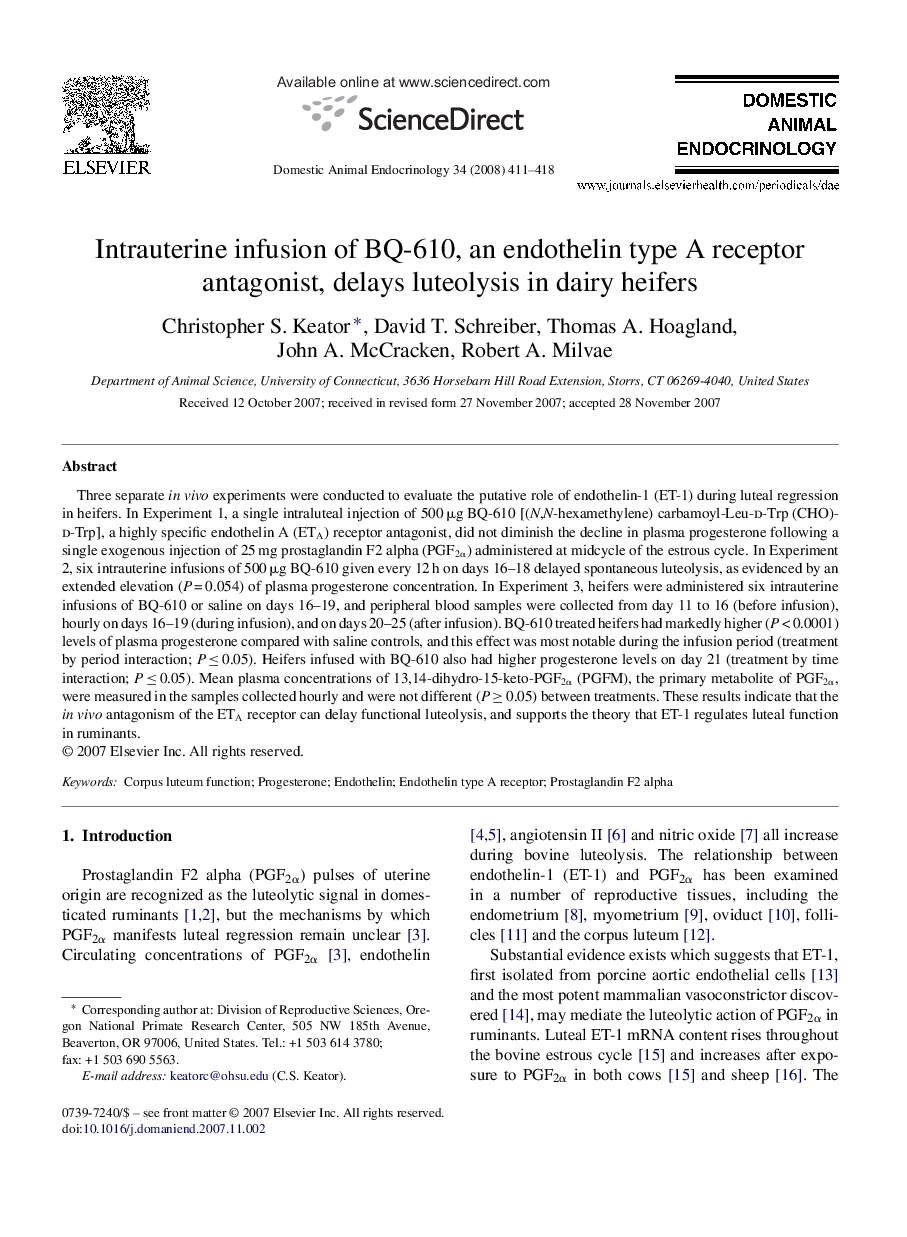| Article ID | Journal | Published Year | Pages | File Type |
|---|---|---|---|---|
| 10961177 | Domestic Animal Endocrinology | 2008 | 8 Pages |
Abstract
Three separate in vivo experiments were conducted to evaluate the putative role of endothelin-1 (ET-1) during luteal regression in heifers. In Experiment 1, a single intraluteal injection of 500 μg BQ-610 [(N,N-hexamethylene) carbamoyl-Leu-d-Trp (CHO)-d-Trp], a highly specific endothelin A (ETA) receptor antagonist, did not diminish the decline in plasma progesterone following a single exogenous injection of 25 mg prostaglandin F2 alpha (PGF2α) administered at midcycle of the estrous cycle. In Experiment 2, six intrauterine infusions of 500 μg BQ-610 given every 12 h on days 16-18 delayed spontaneous luteolysis, as evidenced by an extended elevation (P = 0.054) of plasma progesterone concentration. In Experiment 3, heifers were administered six intrauterine infusions of BQ-610 or saline on days 16-19, and peripheral blood samples were collected from day 11 to 16 (before infusion), hourly on days 16-19 (during infusion), and on days 20-25 (after infusion). BQ-610 treated heifers had markedly higher (P < 0.0001) levels of plasma progesterone compared with saline controls, and this effect was most notable during the infusion period (treatment by period interaction; P â¤Â 0.05). Heifers infused with BQ-610 also had higher progesterone levels on day 21 (treatment by time interaction; P â¤Â 0.05). Mean plasma concentrations of 13,14-dihydro-15-keto-PGF2α (PGFM), the primary metabolite of PGF2α, were measured in the samples collected hourly and were not different (P â¥Â 0.05) between treatments. These results indicate that the in vivo antagonism of the ETA receptor can delay functional luteolysis, and supports the theory that ET-1 regulates luteal function in ruminants.
Keywords
Related Topics
Life Sciences
Agricultural and Biological Sciences
Animal Science and Zoology
Authors
Christopher S. Keator, David T. Schreiber, Thomas A. Hoagland, John A. McCracken, Robert A. Milvae,
